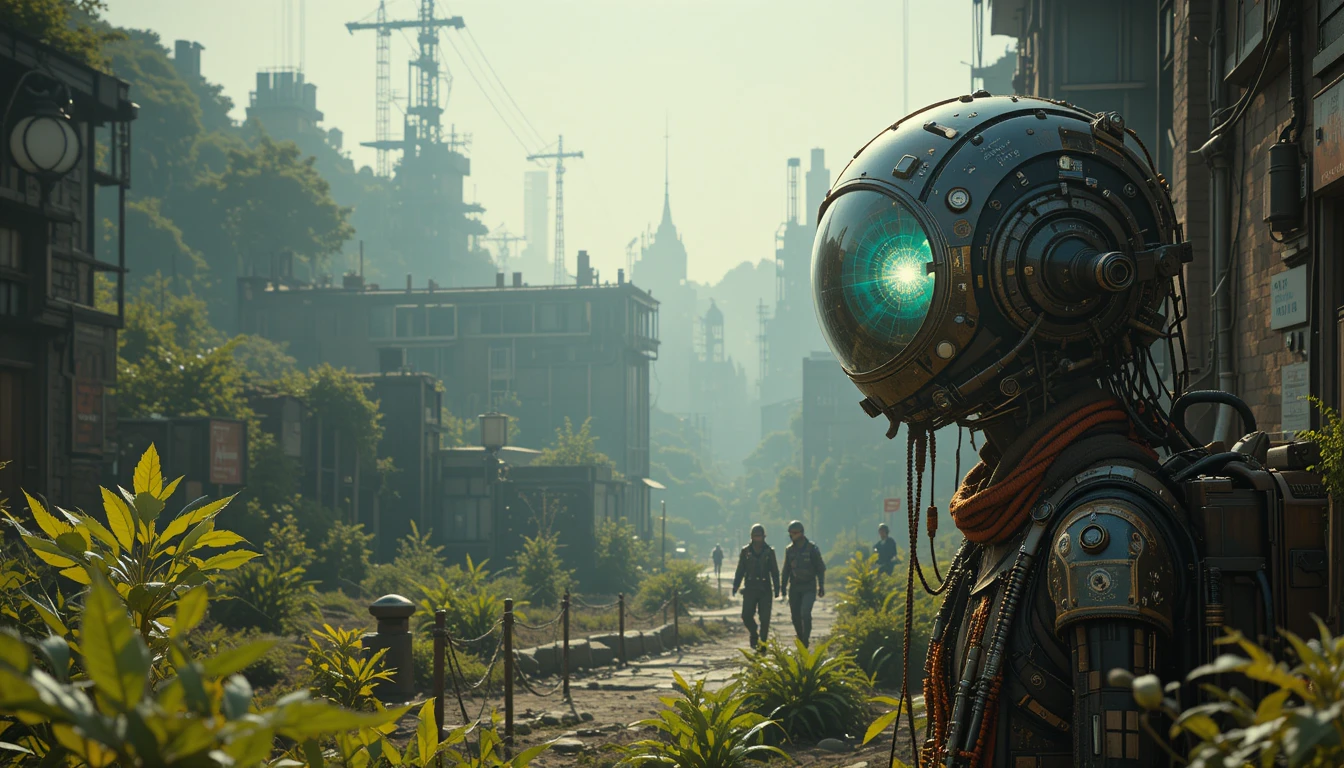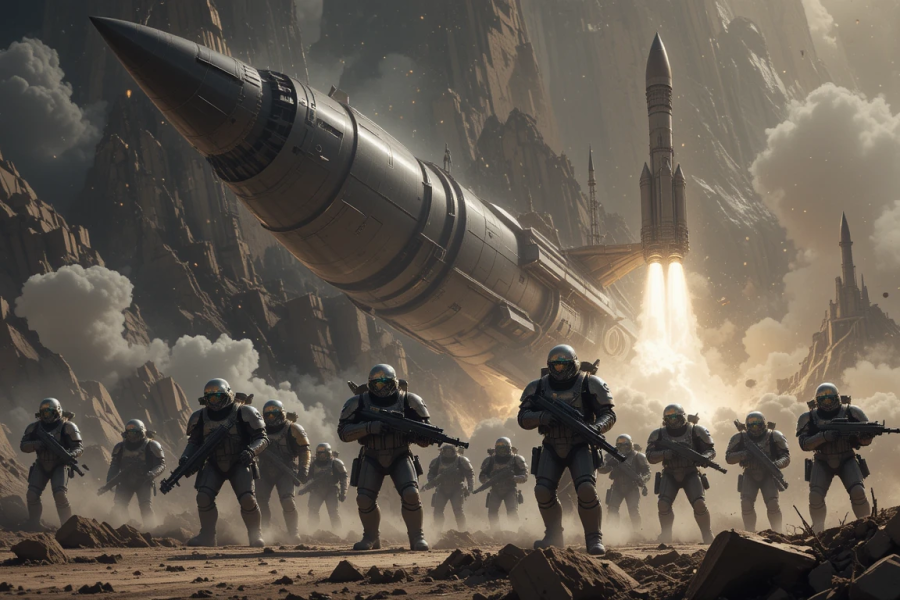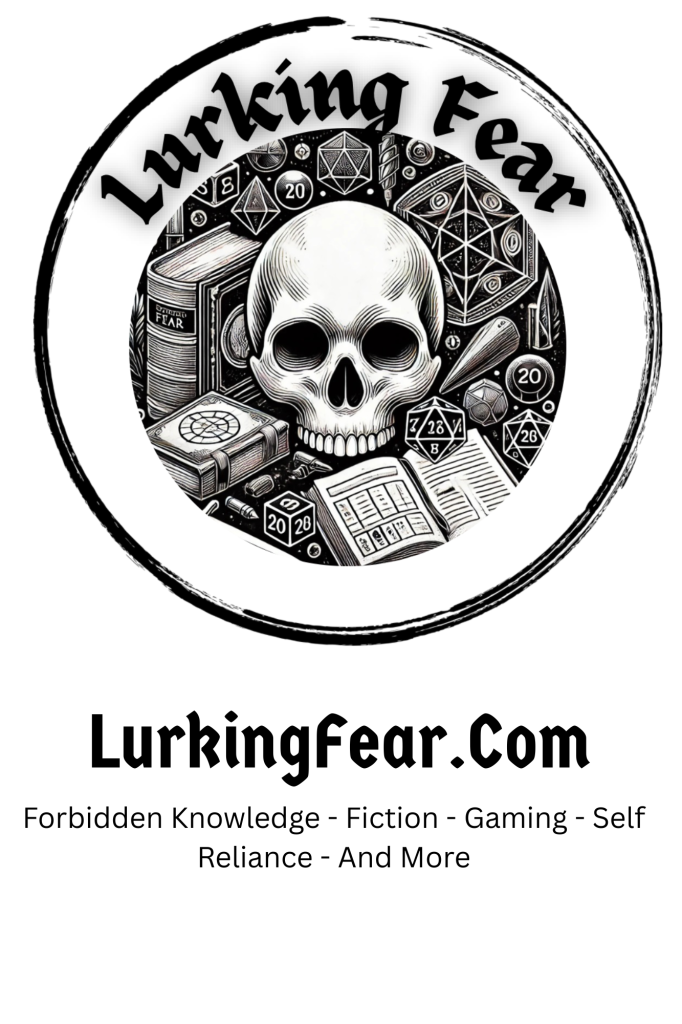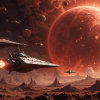- Key Takeaways
- Defining Space Opera
- Historical Trajectory
- Seminal Works
- The Modern Resurgence
- Beyond Entertainment
- Crafting Universes
- Conclusion
- Frequently Asked Questions
Key Takeaways
- Space opera mixes epic-scale warfare, lush human melodrama, and wondrous technology in vast, far-flung locales.
- The genre’s emphasis on derring-do and melodrama, not rigorous scientific realism, captured the imagination of a mass audience.
- From early pulp fiction to the Golden Age and New Wave, space operas have adapted to shifting cultural and technological landscapes.
- Both foundational and modern works both shape and redefine the genre, providing alternative viewpoints and tackling current concerns.
- Space operas, as we’ve discussed, are contemporary myths and social allegories that ask us to consider timeless themes, morality, and the real-world issues facing us.
- Good space opera needs great world-building, compelling characters and well crafted plots to create a rich and exciting reader experience.
Space opera is a sci-fi subgenre which narrates tales in outer space, typically with grand narratives, large casts and futuristic technology. Most space operas depict interworld warfare, chronicles of galactic empires, or heroes’ missions across the stars.
A few famous examples of this style are Star Wars, Dune, Foundation. Books, movies and TV shows in this genre frequently combine action, drama and politics with distant worlds and aliens.
Writers and creators continue to innovate with new concepts and locations, fueling the genre’s expansion. The following sections of this post will describe the defining characteristics, important history, and iconic examples of space opera.
Defining Space Opera
Space opera is a form of science fiction, set in the distant future, often populated with grand worlds, heroic battles, and daring exploits. They frequently unite the intimate and the epic, merging tales of love and loss with battles of cosmic consequence, intertwining the destinies of individuals and entire civilizations.
Unlike conventional sci-fi that skews toward scientific plausibility, space opera is propelled by drama, spectacle, and passion. Spanning everything from television and radio dramas to blockbuster movies, space opera captures the imagination in a unique way.
1. Grand Scale
Space operas take place on an expansive scale, sometimes spanning multiple planets or even galaxies. Tales like Star Wars or Dune present us with worlds teeming with bizarre terrain and alien civilizations.
The conflicts might be grand, like star empire wars or insurrections against galactic monarchs. These huge battles tend to be unlike the operatic style of classic Westerns, sometimes with actual cowboys in space.
High stakes and grand backdrops inform both plot and characters. Heroes and villains become swept up in events that stretch them to their limits, while the sweep of the setting lends gravity to every decision they make.
2. Human Drama
At the core of space opera there’s a human tale. Characters grapple with love, loss and family bonds, even as they encounter cosmic dangers.
Take, for instance, the interpersonal dynamics of Battlestar Galactica or The Expanse — they’re just as important as any space battle. These stories really explore hard decisions — what will someone sacrifice for the good of others?
It’s that personal side of space opera that keeps the genre relatable, regardless of how out there the setting.
3. Melodramatic Tone
Space opera is emotionally heightened. Plots twist and turn, with betrayals, sacrifices and sudden reversals.
Traditional good guys, bad guys and victims all move the plot along, each contributing their own step to the dance. The tone oscillates between earnest and more playful, preventing the story from being too ponderous or corny.
4. Technological Wonder
Space opera worlds are stuffed with crazy tech—huge starships, futuristic weaponry, and aliens. These devices aren’t mere set dressing—they drive the plot, sometimes causing trouble or sparking conflict.
The manner in which technology is utilized frequently mirrors actual-world aspirations or anxieties—from artificial intelligence to potent new energy sources.
5. Adventurous Spirit
Space opera is adventure. Characters quest, discover uncharted worlds, and confront danger. Action sequences–space dogfights, escapes from the clutches of an evil overlord, and so on–imbue these tales with dynamism.
The feeling of awe and adventure is what captivates so many readers, resonating with timeless stories of discovery but transposed into the cosmos.
Historical Trajectory
Space opera has evolved significantly since the early 1900s. Influenced by culture, new tech, and world events, it made its way from pulp magazine origins to blockbuster shows and novels. Writers and creators across the globe gave the genre a shove ahead, each putting their own twist.
Pulp Origins
Space opera got its start in pulp rags. Early scripters such as E.E. Doc” Smith and Edmond Hamilton spun speedy yarns packed with massive combat and unbridled science. Their tales laid the foundation for space heroes, dark empires, and galaxy-sized stakes.
Smith’s Lensman series, which debuted in 1934’s Triplanetary, is generally regarded as the first to depict war on a genuinely galactic scale. These early pieces employed straightforward plotting and brash style, which made them distinctive. They popularized tropes such as ray guns, space fleets, and rescue missions. Even now, those factors appear in contemporary space opera.
Golden Age
The Golden Age, from the late 1930s into the 1950s, made space opera bigger and more baroque. Authors such as Isaac Asimov, Arthur C. Clarke, and Frank Herbert pushed the genre even further. Herbert’s Dune (1965), a best-selling sci-fi novel, stirred politics, ecology, and huge interstellar warfare.
Magazines and anthologies aided these stories in reaching a larger audience. The period established motifs of domination, empire, and social transformation that continue to influence space opera to this day. As in the case of Smith’s popular Lensman or Bester’s novels, pop works broadened the scope of what space opera could be about — to more than just adventure.
New Wave
The late 20th century New Wave introduced major innovations. Writers such as Samuel R. Delany and Alfred Bester brought social commentary and more fleshed out characters. They employed fresh forms and stared hard at difficult questions such as identity and authority.
Narratives moved beyond mere action on to what makes us tick. TV shows such as Star Trek combined adventure with concepts of race and politics. Historian Rick Worland observed how Star Trek mirrored the US during the Cold War, with its multi-racial crew serving as a beacon of hope, but clinging to some 1960s prejudices.
Later, in the 80s and 90s, space opera got a new lease on life. Writers such as Alastair Reynolds expanded upon this, mixing hard science with old-fashioned space adventure.
Seminal Works
These big, beautiful seminal works in space opera serve as the backbone of the genre. They’ve influenced the way audiences and authors approach epic tales of the cosmos. Many of these tales emphasize epic topics — the conflict between man and machine, the horror of combat, and the quest for self in desolate worlds.
These seminal works have an impact beyond the book world — extending to movies, TV, comics, etc.
Foundational Texts
Classic tales, such as Edgar Rice Burroughs’ Triplanetary and E.E. Smith’s Lensman Series, constructed the guidelines for space opera. Triplanetary, serialized in 1934, delivered a sprawling vision of interstellar war, laced with political intrigue and cosmic stakes.
E.E. Smith’s Lensman tales offered galactic-scale wars and protagonists whose exploits determined the destiny of civilizations. While these tales tended toward the adventure they weren’t afraid to probe the shadowy aspects of advancement and authority.
What made Starship Troopers a standout was its peek at military life and civic duty in a futuristic society. While now snarled for a few period pieces, it prodded the genre to address issues of control and ethics.
Flash Gordon — starting in 1934 as an Alex Raymond comic strip — established a look and narrative cues for space opera, inspiring subsequent adaptations and even big budget movies.
These foundational works are rich in themes that remain central to space opera: technological progress, the nature of leadership, and the costs of war. They are usually a blend of fast action and quiet passages that challenge readers to reflect on what it means to be human.
For readers interested in tracing the origins of the genre, these are must-reads.
Modern Classics
Modern classics, such as Alastair Reynolds’ Revelation Space, stretch the space opera into new realms. Sprinkled throughout, Reynolds threads themes of memory, loss and the moral boundaries of technology in an epic backdrop stretching millenia.
Fred Saberhagen’s Berserker series imagines wars between humans and lethal machines — probing the nature of AI and what makes life worth living.
Valérian and Laureline, the French graphic series by Pierre Christin and Jean Claude Mézières, transplanted space opera themes into graphic novels and went on to influence European and global sci-fi.
Today, variegated writers contribute new perspectives and topics like social justice and cultural identity while maintaining the swashbuckling essence of space opera.
Contemporary space operas employ fresh narrative techniques. They might mix in first-person narration or non-linear timelines, rendering the stories more intimate and intricate.
What makes these books resonate with us modern readers is how they unite the excitement of exploring the unknown with practical, worldly issues, appealing to a wider, more diverse audience.
The Modern Resurgence
The past ten years have witnessed an unequivocal resurgence of space opera in literature and film. This trend reflects a shift in what readers and viewers want: stories that mix grand adventure with big questions about technology, power, and the future. The genre’s resurgence is not merely fiendish, it’s about addressing the demands of our evolving world, where hyper acceleration of tech and global issues put the consequences in play.
Why Now?
Societal shifts have powered this new surge of space opera. The rate of global change—social, political, technological—has found a lot of us looking for stories that provide escape, but weave meaning into making sense of overwhelming reality. Space opera provides both.
While space odysseys provide a relief from immediate concerns, these narratives reflect reality-based concerns such as climate change, resource consumption, and the impact of major tech companies. That mix of escapism and relevance is a major pull.
Ideas of connection and meaning shine through. A lot of readers these days want more than just action; they want stories that explore deeper questions about identity, power, and humanity. Modern space opera likes to play with these issues, occasionally in the context of eco-allegory or anti-colonialism.
Blockbusters like The Expanse and Dune have amplified the genre’s profile, exposing new audiences to its blend of spectacle and substance.
What Changed?
Reader preferences changed. Today’s audience craves diversity of voice and experience, and publishers listened. The shelves are now filled with more women and writers of color, offering new vantage points on the genre.
This variety has enabled space opera to become more rich and more diverse, with tales that span from massive conflicts to deeply intimate odysseys. Writers are even reimagining old conventions.
Rather than straightforward good-versus-evil storylines, contemporary space operas may explore moral ambiguity, challenge authority, or incorporate elements of other genres such as detective fiction or romance. Others take a dip into old school sci-fi concepts but introduce new spins or employ them as a lens to critique contemporary social concerns.
Digital tools have been impactful as well. Websites and self-publishing offer more authors access to readers, accelerating the rate of innovation. The end product is a more diverse spectrum of voices and genres, from high-octane adventure to reflective slow-burn epics.
Beyond Entertainment
Space opera is more than escapism. It now influences perspectives of self, other, and world. The genre explores questions of culture, identity, and the future. Space operas, while they mix big, exciting stories with real-world issues, provide more than just action and spectacle.
| Educational Potential | Societal Reflection |
|---|---|
| Ignites interest in science, tech | Mirrors social issues and ethical dilemmas |
| Makes science approachable and fun | Raises questions on power, justice, freedom |
| Inspires curiosity in young audiences | Challenges norms, invites debate |
| Shows consequences of new tech | Fosters empathy across cultures |
Modern Mythology
Space opera becomes a modern myth. It taps into universal themes—good versus evil, sacrifice and hope—that resonate across cultures. These narratives assist us in understanding our rapidly transforming worlds.
The heroes, frequently imperfect, have to confront decisions about right and wrong. Their adventures resonate with timeless mythology, but now amid constellations and alien landscapes. Writers employ space opera to craft myths for our contemporary world.
They breathe new life into old tales by slapping on alien cultures, future tech or undiscovered planets. These new myths assist us to discuss things such as identity, faith, and the human condition.
Heroism is conspicuous. Characters can head revolutions or make difficult decisions to save others. They shove readers to consider what’s right and worth fighting for. These stories influence our perceptions of bravery, authority and civilization to this day.
Societal Mirrors
Space opera reflects the trials and aspirations of culture. Writers employ it to discuss dominance, authority and the human spirit of rebellion. Epic battles and alien empires can echo real conflicts and arguments going on in our world.
Other tales demonstrate the way technology transforms existence, for good or ill. Others wonder what occurs when groups encounter novel rules or novel threats. These stories assist us to view topics such as oppression and resistance with new perspective.
By making such problems part of grand adventures, space operas ignite discussion. They get readers to reflect a bit on what’s fair, right, or just. Tales from afar can foster cross-cultural empathy.
Publisher Influence
Publishers have a huge influence on what space opera books get exposure. Big marketing pushes determine what stories make it to readers. Fads shift quick, with certain publishers demanding old-school yarns and others clamoring for fresh lips and lyrics.
The connection between authors and publishers counts. Together, they choose which currents are dived into and amplified. Independent publishers have brought in stories that break old molds, making the genre richer.
Crafting Universes
Space opera tales are distinguished by their construction of whole worlds that seem real yet still inspire awe. World-building molds these tales, providing authors the space to blend myth, biology, and fantasy. A good-crafted universe allows readers to believe they could enter it, and shoddy conventions or shortcuts can destroy that magic.
World-Building
Transparent logic binds a fictional universe. Establishing rules—such as the mechanics of faster-than-light travel or the constraints of alien technology—builds readers’ faith in the world. Geography provides the backdrop, from dead moons to fertile worlds, influencing commerce, diplomacy and war.
Politics and culture shape life—they don’t just regurgitate old power fantasies. Authors may apply Spengler’s vision of civilization life cycles to envision empires that ascend, descend, and transform over millennia.
Alien species bring color. They may introduce new perspectives, traditions, or even linguistic idiosyncrasies. Over millennia, languages shift quick—only 1% of basic vocabulary can remain for 20,000 years, making every age feel novel.
Maps or family trees assist readers in following changing borders, alliances and lineages — making the world feel larger still.
Character Arcs
A checklist for dynamic arcs:
- Give each character clear motives and real flaws.
- Show growth—let them change after each win or loss.
- Build ties with others that feel true to life.
- Let even heroes make mistakes or doubt themselves.
Characters develop when confronted with difficult decisions. A dashing hero or clever heroine rings true when forged through personal loss or well-fought victories.
Relationships — be it love or rivalry or duty — imitate the slop of real life. Writers such as to use the golden trio or five-man band to balance personalities and propel the story.
Narrative Pacing
Pacing keeps us readers hooked. Fast action sequences should intersperse with slow moments of conversation or contemplation. Harmonizing these establishes a cadence.
It’s this tension—teasing the threats, raising the stakes—that makes the pay-off feel earned. A firm architecture leads readers through whirls and unwrappings, particularly in tales with grand plots or labyrinthine machinations.
Conclusion
Space opera continues drawing in new fans with exotic planets, huge stakes, and fearless heroes. Writers construct massive galaxies, sprinkle in weird tech and highlight genuine conflicts, so readers and viewers remain captivated. These kinds of stories make people consider hope, risk and change in ways that resonate — no matter where you live. Whether it’s classics or new hits, space opera finds a way to linger. It provides new perspectives to view the world and pose big questions. Want more out of your sci-fi? Like sampling a new space opera or passing your favorites along to a friend. The next great adventure could be lurking just around the corner.
Frequently Asked Questions
What is space opera?
Space opera is a subgenre of science fiction. Think grand adventures, interstellar travel and dramatic conflict in space. Story’s about action and passion and epic locations.
How did space opera begin?
Space opera came early in the 20th century. It showed up in pulps and on the radio. Early efforts employed imaginative interstellar travel and protracted wars.
Which are the most famous space opera works?
Think of works such as Star Wars, Dune, Foundation. These works defined the genre and influenced countless writers and directors around the globe.
How has space opera changed in recent years?
Modern space opera delves into more serious themes and nuanced characters. It frequently features alien civilizations and spaceships, while mirroring current issues and ideals.
Why do people enjoy space opera?
We love space opera for its thrills, fantasy worlds, and sweeping tales. It provides a sense of adventure and escape while exploring timeless themes.
What makes space opera different from other science fiction?
Space opera is concerned with epic stories and dramatic action. It tends to include galactic empires, heroic characters, and emotional stakes, where other sci-fi leans toward scientific accuracy or realism.
Can space opera have real-world impact?
Sure, space opera can get people interested in science, and tech and space exploration. It can impact culture, inspiring inclusiveness, collaboration, and imagination with its narratives.









